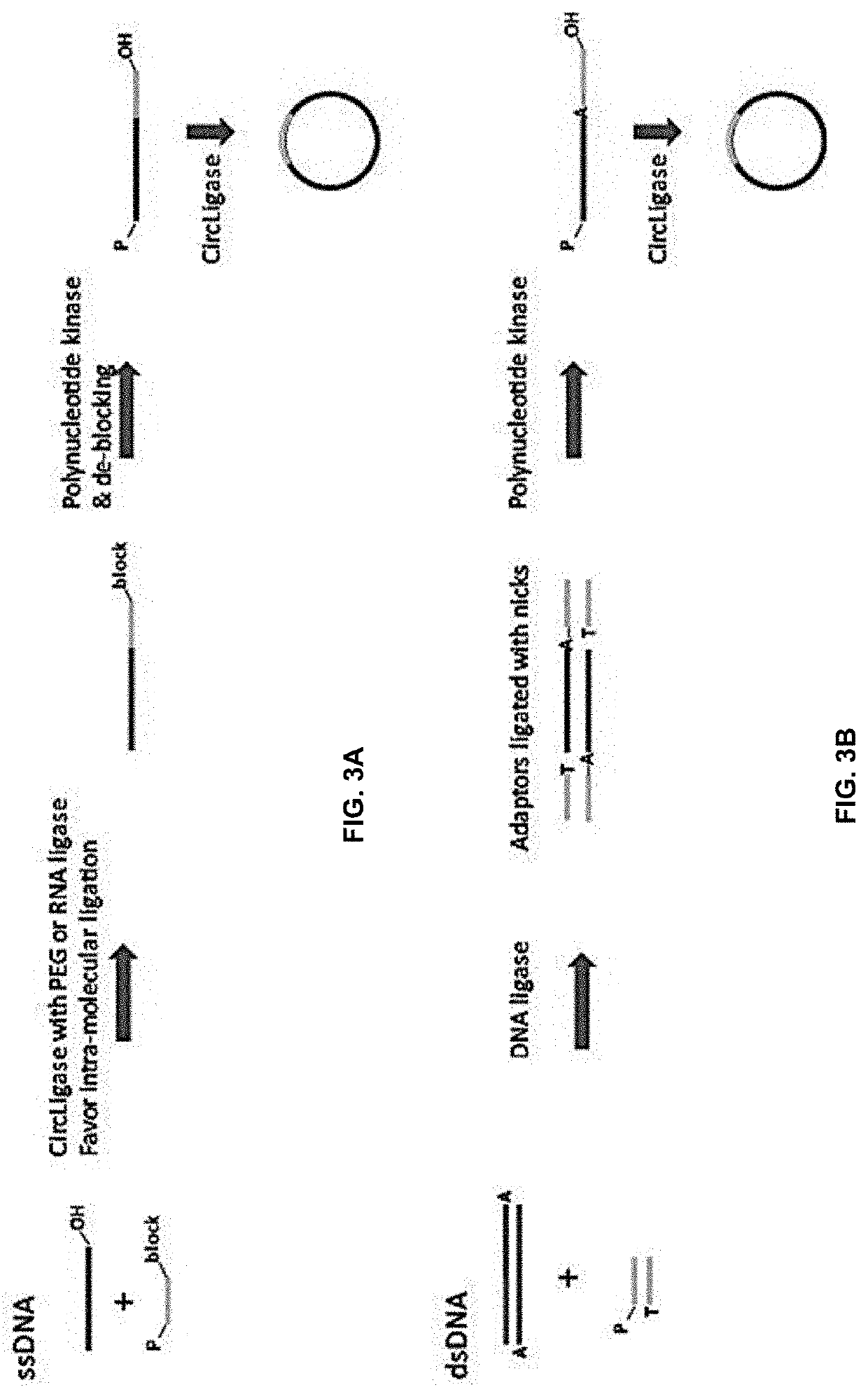Compositions and methods for digital polymerase chain reaction
- Summary
- Abstract
- Description
- Claims
- Application Information
AI Technical Summary
Benefits of technology
Problems solved by technology
Method used
Image
Examples
example 1
lysis of Cancer Variants Using WGA Amplified Short Fragmented cfDNA Reference Standard Samples
[0108]cfDNA reference standards were made by mixing short, fragmented DNA of size ˜150 bp from different cancer cell lines and NA12878 at different ratios. Four different cfDNA reference standards were used in this study: 5 ng of 0.25% reference standard; 10 ng of 0.25% reference standard; 20 ng of 0.1% reference standard; and 20 ng of 0% reference standard.
[0109]Each sample had 3 replicates. DNA samples were denatured at 96° C. for 30 seconds, and chilled on an ice block for 2 minutes. The addition of ligation mix (2 μL of 10× CircLigase buffer, 4 μL SM Betaine, 1 μL of 50 mM MnCh, 1 μL of CircLigase II (Epicentre # CL9025K) was set up on a cool block, and ligation was performed at 60° C. for 3 hours. Ligation DNA mixture was incubated at 80° C. for 45 seconds on a PCR machine, followed by an Exonuclease treatment. 1 μL Exo nuclease mix (Exol 20U / μL: ExoIII1OOU / μL=1:2) was added to each tu...
PUM
| Property | Measurement | Unit |
|---|---|---|
| Fraction | aaaaa | aaaaa |
| Mass | aaaaa | aaaaa |
| Volume | aaaaa | aaaaa |
Abstract
Description
Claims
Application Information
 Login to View More
Login to View More - R&D
- Intellectual Property
- Life Sciences
- Materials
- Tech Scout
- Unparalleled Data Quality
- Higher Quality Content
- 60% Fewer Hallucinations
Browse by: Latest US Patents, China's latest patents, Technical Efficacy Thesaurus, Application Domain, Technology Topic, Popular Technical Reports.
© 2025 PatSnap. All rights reserved.Legal|Privacy policy|Modern Slavery Act Transparency Statement|Sitemap|About US| Contact US: help@patsnap.com



